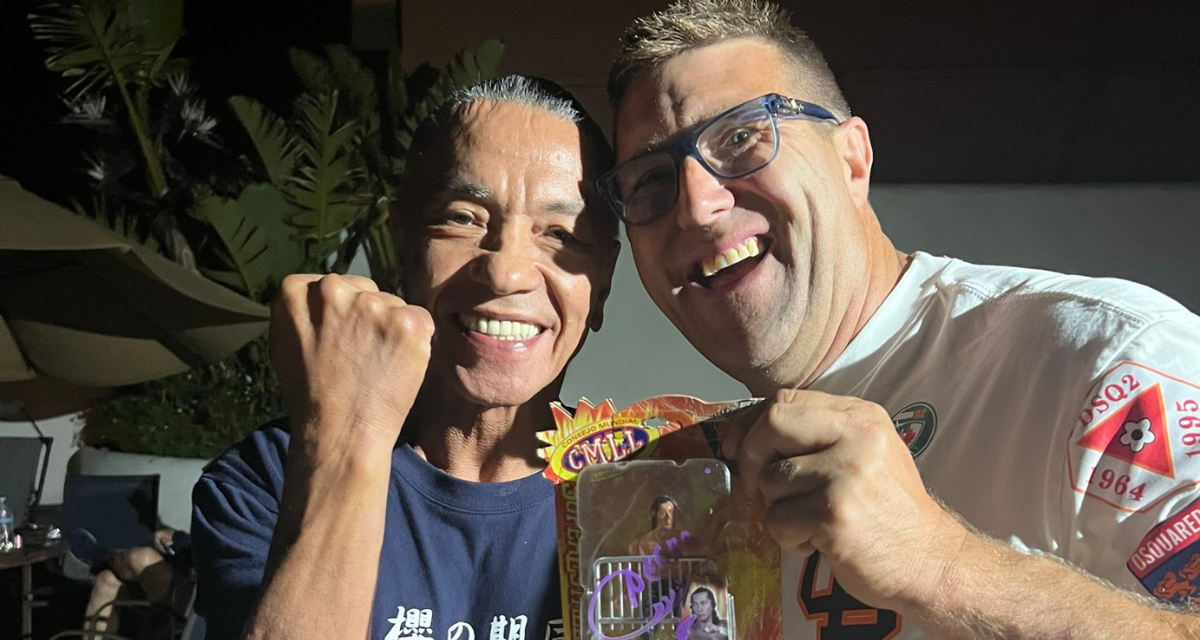The first four honorees of the Cauliflower Alley Club Lucha Libre Award have all been extremely deserving luchadors: Blue Demon Jr.; Rey Mysterio Jr.; Konnan, and last year, Damian 666. One thing that all four have in common is that during their long careers, they were visible to the public inside of the United States. Blue Demon Jr. was the NWA World Heavyweight champion. Mysterio’s career has taken him all over since his ECW debut in 1995 and Konnan paralleled him in many ways, just without the WWE stardom (Konnan’s time as Max Moon probably does not count). Damian 666 had runs in WCW/ECW/XPW.
The 2024 honoree, Negro Casas, doesn’t have the visibility the others have here in the States, but the impact that he has created worldwide puts him in any Hall of Fame.
From my perspective, I truly believe you cannot have an award that is called the “Lucha Libre Award” without having Casas as a recipient.
This is something Casas was born to do, with his family tree showing no sign of slowing down.
He was born in 1960, which currently makes him 64 years young, the eldest son of José Casas Granados aka Pepe Casas, who started wrestling in 1964.
While Pepe learned the craft, he brought his eldest son with him, and they learned the inner workings of the business together. So even before his first match, Negro had over a decade of being under the learning tree in the crowd and behind the scenes. Casas learned what the crowd liked and hated. He carefully learned what made the fans react the way they did, and he learned and idolized some of the greatest names in all of Lucha Libre history, such as El Solitario and Anibal, along with his father.
By the time 1979 came along, young Negro was at a show, and the promoter approached him and told him his dad was nowhere to be found, and if he doesn’t go out and wrestle in place of his father, that his father would be banned by the Mexico City “Box y Lucha” commission (this group truly does exist in Mexico, but that’s a whole different story one day). He debuted that day, under the name Pepe Casas Jr., and when he came back to the locker room, his father and some friends were waiting to reveal the joke and how he would handle himself, and he definitely did well under the pressure.
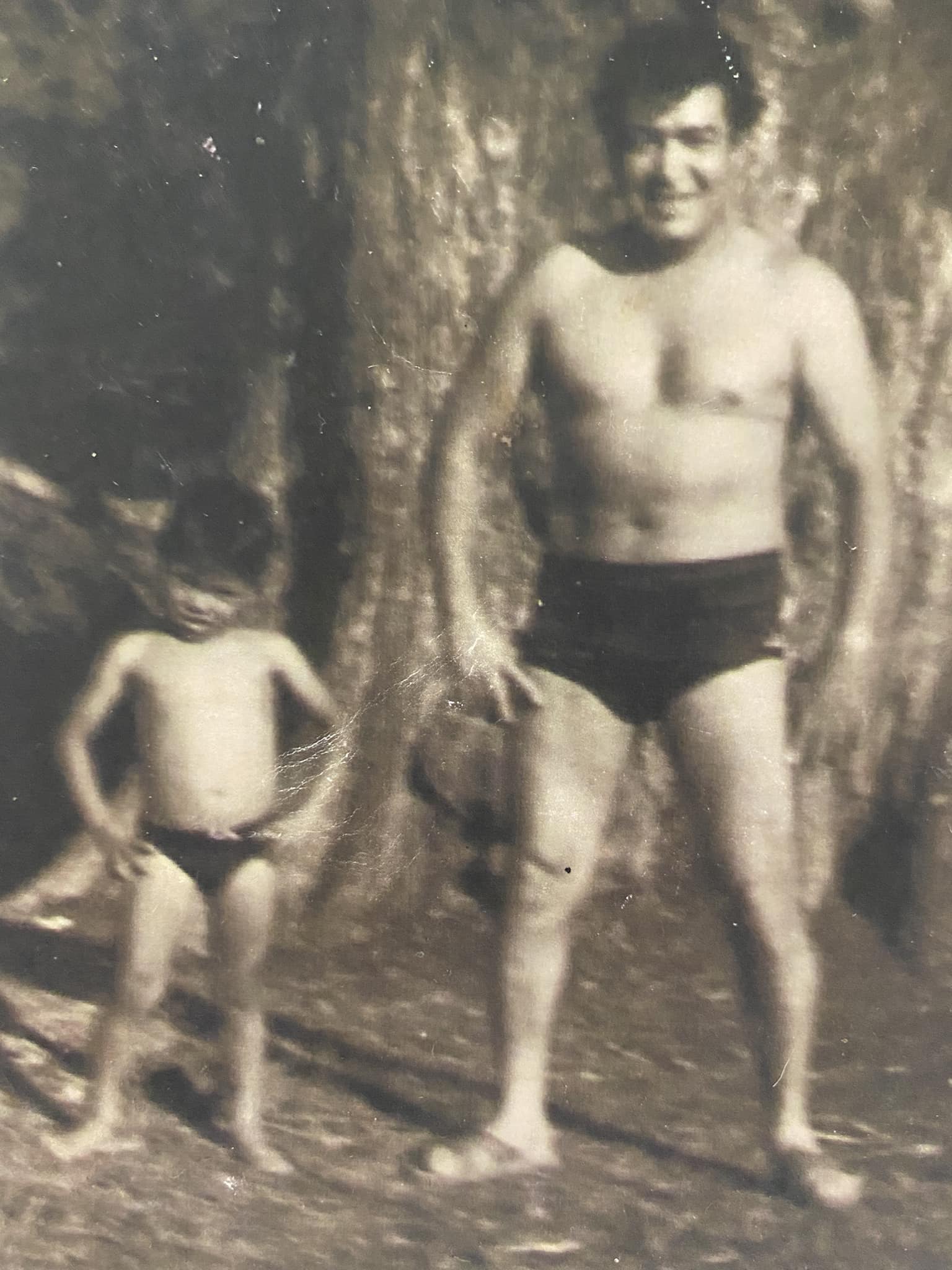
Negro Casas alongside father Pepe Casas
A young Casas impressed early on. A few months into his career, he switched over from Pepe Casas Jr. to “Negro” (the color black in Spanish) Casas, the name that would stay with him. Less than two years after his debut, Negro would really be the focus of the fans and reporters, with a couple matches against Fuerza Guerrera in 1981 involving the Distrito Federal Lightweight title, taking place at the single most famous arena in all of the country, Arena Mexico in Mexico City, and also Arena Coliseo. The matches were so iconic, especially the Arena Mexico one at the CMLL 48th Anniversary event, that there are still reporters today who were there live and talk about it as one of the best matches they ever saw.
Word of Casas spread throughout the magazines and word of mouth, and soon enough, he started wrestling for the competition in Mexico, the UWA (Universal Wrestling Association). The UWA had events at El Toreo de Cuatro Caminos, a bullring that held over 20,000 fans, and for well over a decade, the building would sell out, using some of the hugest names worldwide, such as Antonio Inoki, Andre the Giant, Hulk Hogan. Casas became a major player during this era, winning the company’s UWA World Lightweight title shortly after his debut.
Around this time, the man he was would be most associated with for the rest of his career was starting to make waves too.
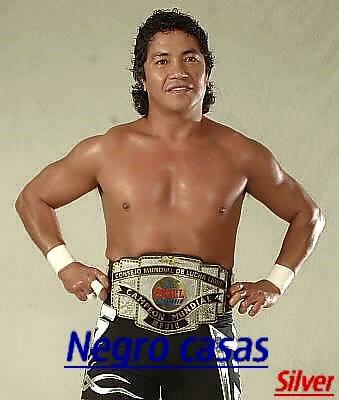
Negro Casas with gold around his waist
In the history of Lucha Libre, the name that is “holier” and held high above every other is El Santo. Santo is pretty much Babe Ruth and Arnold Schwarzenegger all rolled into one. El Santo was not just the country’s most popular wrestler, he was also the Mexico’s top actor, starring in over 50 movies. Santo debuted under another gimmick in 1934, and then as the Santo gimmick in 1942 gimmick. Santo’s career started winding down, and his son, using the name El Hijo del Santo, debuted in 1982. Being the son of the legendary El Santo, he had some big shoes to fill. Luckily for him, he did live up to those expectations, and a lot of it had to do with Negro Casas. After a couple successful years, even winning the Rookie of the Year in Mexico, he then set his sights on the UWA World Lightweight title, with Casas in the way. El Hijo del Santo ended up being the one to end Casas’ 301-day reign as Lightweight champ, and it was at that point, and both El Hijo del Santo and Casas’ names became synonymous with each other.
The two would be each other’s primary opponents, often on a main role in tag team matches (called “parejas” in Mexico) or six-man matches (called “trios” in Mexico). Different partners would be rotated in, many who are Hall of Famers themselves today (Blue Demon Jr. comes to mind), and all over Mexico. But one of their most known matches, would take place at the Olympic Auditorium in Los Angeles.
The WWA (World Wrestling Association) promotion, operated by Benjamin Mora and Karl Lauer, started running at the Grand Olympic Auditorium in 1986. With no television, simply running shows on ads in the Los Angeles based newspaper La Opinion, the WWA were drawing record crowds to the building, doing the best non-WWE gates in the U.S. at the time. They did this bringing in the top names from Mexico, like Tinieblas, Lizmark and Ultraman, mixing in with locals like Billy Anderson, and so many more.
WWA’s biggest gate and match involved Negro Casas and Hijo del Santo. The two met on July 18, 1987 at the Olympic, an arena the likes of Roddy Piper, Chavo Guerrero, Freddie Blassie, and John Tolos helped make famous, and gave the fans in attendance a night they would never forget. In Lucha Libre, the biggest possible match is known as an “apuesta” (bet), where the loser puts something on the line, usually their mask or their hair. These type of matches result in sold-out arenas (and higher ticket prices), because of the fans who want to see the loser lose their mask and their identity is revealed, or a loser shamed and have his head shaved. On the previous show, on June 27th, Casas beat Santo in two straight falls, ripping the mask of Santo and leaving him a bloody mess, and the fans left truly believing Santo was in trouble. Luckily enough, there is video of the July 18th Santo vs Casas match, and it’s definitely worth going out of your way if you’ve never seen it before. The match has everything you can hope for in a big match, with the fans at the edge of their seats with every near fall. Santo ultimately won, but a sold out Olympic Auditorium with over 7,500 fans got their money’s worth that evening.
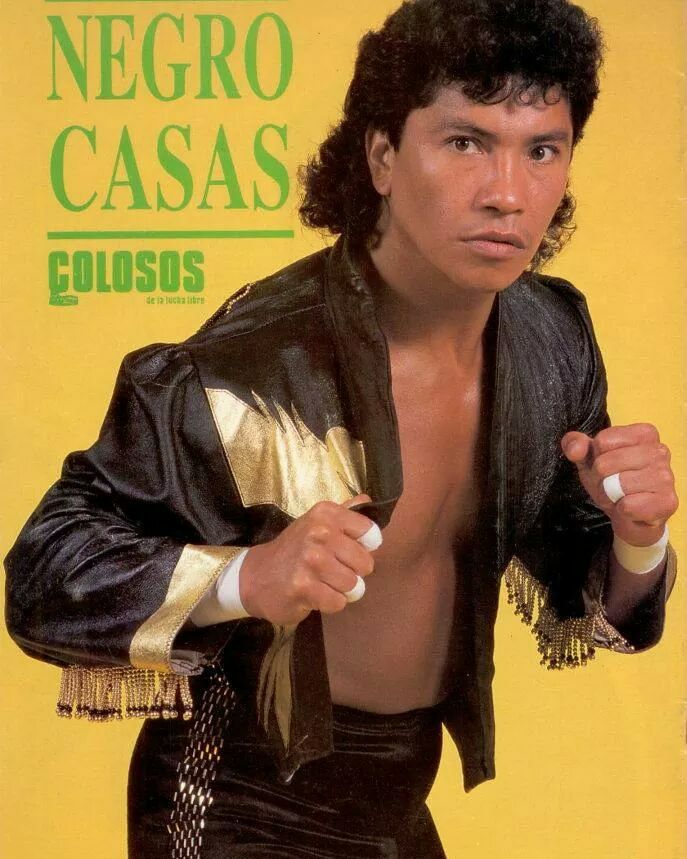
Negro Casas
Antonio Inoki’s New Japan promotion often sent wrestlers to Mexico City to work when they weren’t wrestling in Japan. If you look at results from the UWA (El Toreo) promotion in the 1980s and ’90s, you’ll often find a Who’s Who of the top names from New Japan on the card. One such name was the legendary Jushin “Thunder” Liger, who early in the Liger gimmick, went over to El Toreo and worked a few shows. He remembered how impressive Negro Casas was, and while Casas had Japan commitments with a rival promotion (Universal) at the time, a year after Liger’s Mexico City tour, he finally brought Casas into New Japan and defended his IWGP Jr. Heavyweight title against Casas on the same card where Lou Thesz wrestled his final match of his career on December 26, 1990.
Casas also competed in what many still call the single greatest night for junior heavyweights of all time, the Super J Cup, that New Japan promoted with multiple promotions, on April 16, 1994, being the CMLL representative that evening. Also of note, in August of 1996, New Japan held a tournament where eight light heavyweight titles would be unified into one, and the tournament was known as the “J Crown”. This led to a four day tournament, one of the eight titles defended was the NWA World Welterweight title, held by Negro Casas.
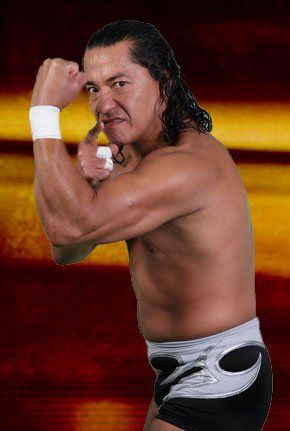
Negro Casas
Going back to Mexico, in May of 1992, promoter Antonio Pena left the CMLL promotion that he worked for and created his own promotion, known as “Asistencia, Asesoría y Administración de Espectáculos”, or AAA for short. This new promotion caught the eyes of fans and luchadors alike. One of the drawbacks of the new promotion was it partially led to the downfall of the UWA promotion at El Toreo. Around this time, Casas stopped working full time for UWA and made the CMLL promotion (based out of Arena Mexico and Arena Coliseo in Mexico City) his home promotion. Casas would now be seen by millions weekly, as CMLL had television on Televisa in Mexico, and Galavision in the United States and all over the world. He would be involved in several top programs with CMLL over the next couple decades, and also behind the scenes, would be one of the top trainers at the gym at Arena Mexico, where hundreds of wrestlers worldwide would come and learn the craft of Lucha Libre.
One of the most notable names here would be Chris Jericho, who came to Mexico in 1993, using the ring name “Corazon de Leon” (Lion Heart). Jericho would be a regular in CMLL for over two years, and would credit Casas as being his favorite opponent in CMLL.
Casas would be the focus multiple times, winning multiple titles (11 different singles title reigns throughout his career and four tag team or trios titles). He would also be involved in more hair vs hair matches, many headlining the top CMLL events (Anniversary shows or its “Homenaje de Leyendas” events) over time.
In August 1995, his top rival, Hijo del Santo, would leave the AAA promotion, and arrived at Arena Mexico, and Santo and Casas became a top tag team. Similar to Hulk Hogan joining the NWO and turning on his fans, Santo finally “went to the dark side” and became a “rudo” in Mexico, and Casas would be the face of Mexico who would defend the promotion and the fans’ honor against the now hated Santo. The new possibilities here with them changing sides led to some legendary battles between the two, including headlining the CMLL 64th Anniversary event on September 19, 1997, with another legendary mask vs hair match. Ultimately, the threat of rudos Scorpio Jr. and Bestia Salvaje were too much of a threat, causing Santo to “come back to the side of the fans”, and he and Casas became a tag team, winning tag titles together and beating Scorpio and Salvaje in a double mask/hair vs hair/hair main event at “Homenaje de Leyendas” in March of 1999.
It should also be noted around this time, the WWF/E made the decision to start a new TV program based specifically for the Mexican markets. The name of the show was Super Astros, which featured luchadors and an occasional performer from the WWF/E brand. The process to get this show involved bringing a lot of young up and coming wrestlers from Mexico, and established names that the Mexican public would recognize. The two biggest names brought over? Negro “4:40” Casas and Hijo del Santo.

Roy Lucier and Negro Casas
For the next couple of decades, Casas would be the ‘go to’ guy for CMLL, the one that could be counted on, show after show, week after week, to be there and give the fans value for their money, to work behind the scenes, and to help to train and get over the hot new babyfaces for the company; his feud with Mistico, in particular, helped get the fans to accept that Mistico was the “real deal”.
Casas would adapt with the times, so that he could still perform in the ring and do what he does the best, including having his own mascot, “Zacarias el Perico” (a small parrot that would accompany him to the ring.
After so many years, it was a huge shock when, on January 21, 2023, Casas, along with his wife, luchadora Dalys la Caribeña, left the comfort of CMLL and Arena Mexico, and joined the competitor, Lucha Libre AAA Worldwide. It should also be noted, that Casas and Daly’s daughter, Zaraida, is married to the most popular luchador currently in Mexico, Psycho Clown.
By making the jump to Lucha Libre AAA, they will get to wrestle with their family at this point of their careers, not to mention all the new luchadors that Casas has never gotten to wrestle during his illustrious career.
TOP PHOTO: Negro Casas and Roy Lucier.
2024 CAULIFLOWER ALLEY CLUB HONOREES
- Iron Mike Mazurki Award: Sting
- Lou Thesz/Art Abrams Award: Kurt Angle
- Karl Lauer Independent Promoters’ Award: David McLane
- Jim Ross Announcers’ Award: Jim Ross
- Women’s Wrestling Award: Allison Danger
- Tag Team Award: The Dudley Boyz
- Men’s Wrestling Award: Buff Bagwell
- Lucha Libre Award: Negro Casas
- Red Bastien Friendship Award: Lori McGee Hurst
- Independent Wrestling Award: “Night Train” Gary Jackson
- Charlie Smith Referee Award: Bill “Fonzie” Alfonso
- REEL Award: Todd Bridges
- James C. Melby Historian Award: Jason Presley
- Courage Award: Black Bart (Rick Harris)
RELATED LINKS
